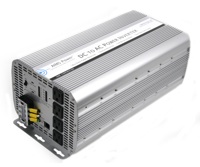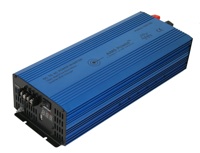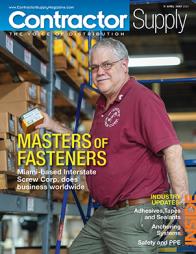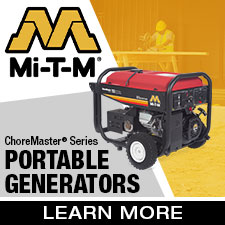Product Knowledge: Power Inverters
Know the difference between pure and modified sine wave power inverters? You do now.
Contractors today need flexible and mobile power solutions. A strong mobile power source helps to cut cost on the job site. It cuts cost of fuel and maintenance on a generator. It makes it easy to do a simple job quickly, with little or no set-up.
There are many benefits for using an inverter for mobile power, mainly convenience. Another benefit to using a power inverter for mobile power is they are silent and have no exhaust fumes, which you have to deal with when using a generator. If you are considering building a mobile power system, you should take sometime and look over this article to help you get a general understanding of a power inverter.
Power inverters are applicable in many different industries. They are deployed in fleet and service vehicles. You can also find power inverters on the job site and in the office for back-up power.
A DC to AC power inverter takes DC power and inverts it to AC power. Simply put, a power inverter takes battery power and makes regular house power. By using batteries coupled with an inverter, you eliminate the noise and maintenance of using a generator for back-up power.
There are many different types of power inverters available today but they tend to fall primarily into one of two types, modified sine power inverters and pure sine power inverters. Within these groups you can find different subcategories; inverter/chargers, industrial grade inverters, car power inverters, 12-, 24- and 48-volt power inverters. All of these are available in both pure sine and modified sine wave versions.
Let’s go back to high school for a second: what is a sine wave? An inverter’s sine wave is the type of power it is producing.
 |
| The AIMS PWRINV500012W is a compact 12-volt, 5,000-watt modified sine wave power inverter with a host of features including a small footprint — just 17 inches long only 16 pounds in weight. It has four AC receptacles that can be used with any separate spliter to provide even more outlets. |
Modified Sine Wave Inverters
Most power inverters sold today are modified sine wave inverters, which produce a sine wave that is not exactly the same as the power you receive from your city utility. The modified sine wave is “blocky” and not as clean as pure sine wave inverter power. Modified sine wave inverters are the most commonly used inverters and will work great with most devices.
Pure Sine Wave Inverters
The next type of power inverter is the pure sine wave power inverter. A pure sine wave inverter produces a cleaner, “smoother” power signal that closely resembles the power you get from your city utility grid. Pure sine power inverters are used with devices that require cleaner power to operate. Some of the most common devices that require pure sine power are laser printers, medical equipment, some TV’s, and variable speed power tools and cordless tool battery chargers.
One of the most popular power inverter products available today are inverter chargers. These are all-in-one units; they have a power inverter, charger and a built-in transfer switch. These units are available in both pure sine and modified sine wave versions. They have the ability to act as a back-up power device.
These units connect to city power and when AC is available the batteries are charging. When there is no AC power present, the unit switches to run off the batteries. They are great for backing up sump pumps and also very popular in RV’s and boats, as well as for emergency back-up power in the home. If you are using an inverter charger in a work vehicle, you can plug this unit into AC power to recharge the battery bank at the end of the work day. This way your batteries are fully charged for your next job.
 |
| Pure sine wave power inverters include this AIMS model WRI150012S with built-in battery charger and transfer switch produces 1,500 watts of continuous, “clean” pure sine wave power, making it ideal for “finicky” devices such as video monitors and laptop computers. |
Industrial Grade Inverters
A third type of inverter is an industrial grade power inverter. These inverters are designed to be used daily and handle heavy loads. For such applications, it is important to make sure that you are using a true industrial grade power inverter. The easiest way to tell is to check the unit’s surge time. On a regular power inverter, the surge is only momentary; an industrial inverter will have a surge time of about nine seconds.
Industrial grade power inverters will also have a wider operating range, which means they can handle colder temperatures and higher heat environments. If you are looking for a true industrial grade product, make sure it has the extended surge time and extreme temperature capabilities.
Power inverters are being used around the globe in many different applications. You can find them being used daily in charter buses, work trucks and company vans. They power many different types of devices, including freezers, air compressors, x-ray equipment and power tools. In many countries where AC power is unreliable or unavailable, you will find power inverters running businesses and homes. Here in the United States, the demand for power inverters for emergency back-up power in homes is growing rapidly. CS
This article was provided by AIMS Power Corp. For more information, contact AIMS at 775-359-6703; Fax 775-359-6753; Web site: www.aimscorp.net















